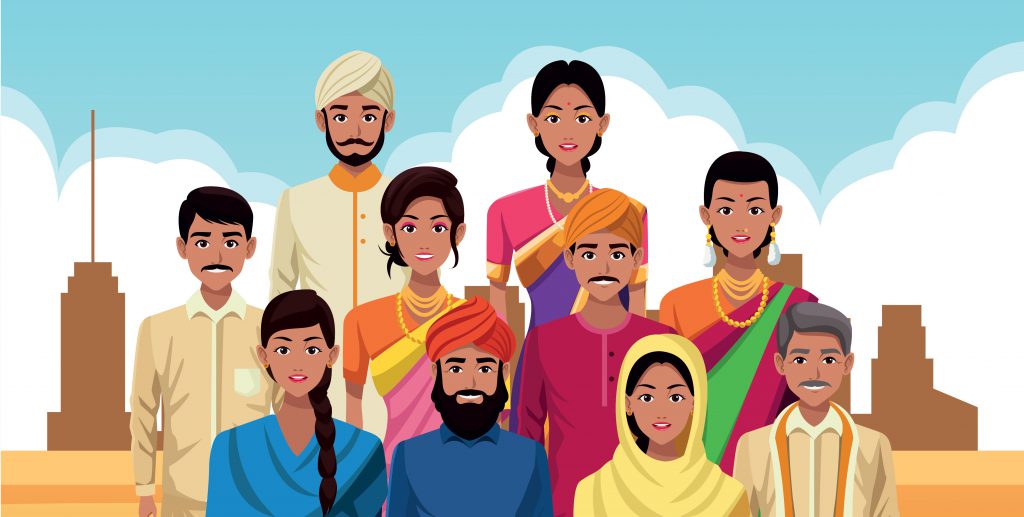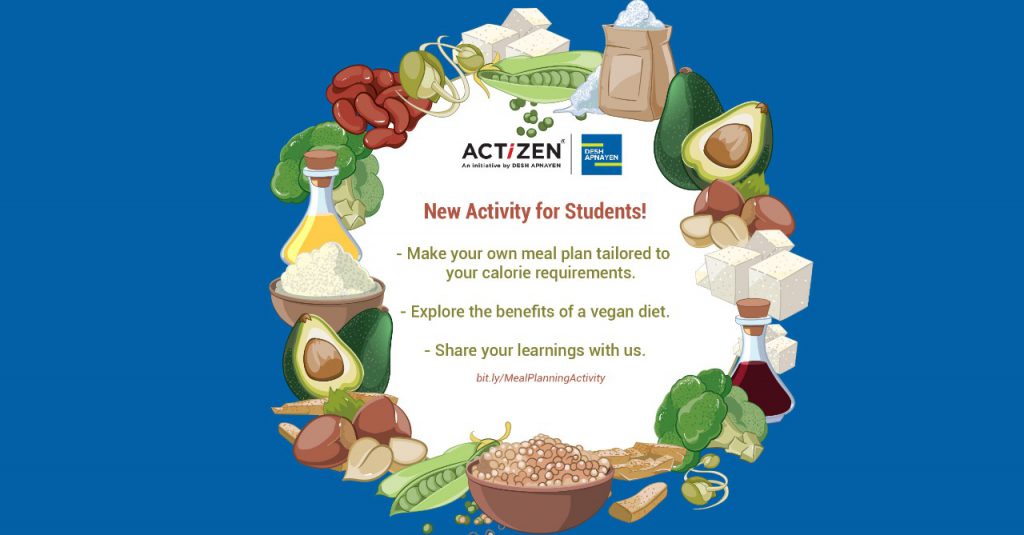January Activity – Goa Art & Culture-Guess It!
EXPECTED OUTCOMES
- Students will be more aware of the art and culture of Goa so that we develop strong bond with it as citizens of the territory.
- Students will acquire knowledge about the diversity in Goa.
- Students will become aware of different areas where they should feel proud as a Goan.
- Skills – Team Spirit and Communication skills.
SESSIONS’ OVERVIEW
| S. No. | Session Details | Estimated Time Required |
| 1 | Introduction
Kindly follow, Step 1 to Step 5 |
45 Minutes |
| 2 | Kindly follow, Step 6 to Step 8
Reflection sheet and Feedback form |
45 Minutes |
MATERIAL REQUIRED
Blank sheet for making word chits
STEPS OF THE ACTIVITY
SESSION-1
Estimated time required: 45 minutes
Introduction
Art & Cultural are a foundation of the community. It preserves a sense of unity and belonging among people of a specific community. So, the ancestors passed much cultural heritage to the new generation.
Let us be more aware of the art and culture of Goa so that we develop strong bond with it and are proud of it.
Introduce the activity by asking questions like,
- Name a few peculiarities of Goan culture that you have seen around you.
- What are the type of Art forms that you have seen in Goa?
- What are the things that you like about Goan art & culture?
Let the students come up with answers. Discuss the answers in the class. After the discussion, tell the students that we will know more about Goan Art and Culture with a game-based activity based on goa Art and Culture this month.
Step 1: Grouping and Game Description
Divide the students into 4-6 groups. Each group should have at least 3 participants and not more than 8-10 participants depending on the size of class.
Tell them about the themes to be prepared on for the main game play.
Themes are as follows:
1. Performing Art-Dance
Goa has quite a variety of traditional dances. Some of the popular folk dances are Dhalo, Dekhni, Fugdi, Shigmo, Kunbi, Ghode Modni and the Lamp dance. The happy blending of cultures in Goa makes it easier for people to respect the different dance forms which give a unique character to the arts.
- Dhalo - Women perform Dhalo dance to ask God to protect their family and household.
- Dekhni - Popular dance of Goa which represents a blend of Indian melody with the tangy Western rhythm.
- Fugdi - Konkan folk dance where only women participate. This dance also represents women’s break from their daily work
- Shigmo - Shigmo is a traditional dance of Goa and is performed during the start of spring season. For farmers it represents regeneration of natural resources. This dance is also performed when soldiers return from the battlefield victorious in their mission.
- Kunbi - One of the earliest folk dances of Goa.
- Ghode Modni - This folk dance is named Ghode Modini because it involves movements like a horse. It is a dance of warriors with swords.
- Lamp dance – In this dance, the dancers must dance very slowly balancing heavy brass lamps on their heads
2. Performing Art- Music
Ghumat, Shamel, Violin, Cymbals, Shehnai and Surt are the major instruments that are used in all types of Goan music. While visiting Goa, you can listen to the traditional music patterns such as- Suvari, Mando (a love song sung by Goan Catholics), Kunnbi-Geet, Painnem Halounk (cradle song), Dantear Ovio (sung while grinding wheat and rice). Goa is known for fascinating and tempting music and it adds a unique flavour to India’s rich cultural heritage with so many musical patterns.
Some of the Musical Instruments used in Goan Music
- Ghumat - The ghumat is an ancient percussion instrument. It is an earthen pot with two mouths.
- Shamel – The Shamel is vase shaped and covered with goat skin
- Violin – The violin, sometimes known as a fiddle, is a wooden chordophone with 4 strings.
- Cymbals – Often used in pairs, cymbals consist of thin, normally round plates of various alloys.
- Shehnai – This tubular instrument gradually broadens towards the lower end.
Traditional Music Patterns of Goa
- Mando - A love song sung by Goan Catholics
- Kunnbi-Geet – Folk song prevalent among the hardy laborer's called Kunnbis.
- Painnem Halounk - Cradle song
- Dantear Ovio - Sung while grinding wheat and rice.
- Goan Trance -- A form of electronic music, popular since 1970.
3. Food
Food and drinks are an integral part of marking Goa's vibrant culture. Meals bring families together and helps to appreciate the culture and tradition of one’s immediate surrounding, and how it contributes to diversity in India’s rich cultural heritage.
Some of the famous food delicacies in Goa
- Feni – Drink made with Fermented Cashews
- Cashews – Locally grown produce that makes Goa popular for its farming and its products.
- Fish & Curry – Combination staple food of Goa.
- Bebinca – It is a traditional Goan Multi layered sweet dish.
- Khatkhate – Goan Mixed Vegetable Stew
- Serradura - It is a combination of whipped cream and tea biscuits.
- Dodol – It is a Goan dish, and it is made up of coconut milk and coconut jaggery. It is jelly-like firm like a halwa.
4. Traditional Goan Attire
The traditional costume of the womenfolk in Goa comprises that of a 9-yard sari also referred to as the ‘Pano Bhaju’ and some jewellery to balance out the entire outfit. The fishermen do not have any particular attire but are usually seen adorning bright cotton shirts with half pants. The women wear a traditional sari with a tied knot using their ‘Kunbi palloo’ and have a very distinctive dressing style.
- Valkal - A string of beads and leafy loincloths, which is still prevalent in the tribal life.
- Kashti - A traditional attire worn by the Dhangar, Gauda, Kunbi, Velip and Zalmi tribes
- Kunbi palloo -The tied knot and saree.
5. Historic sites and neighbourhoods
Goa boasts of rich architectural heritage that speaks volumes about Goa’s heritage. It has well known and well-preserved Churches, temples, forts, places of worships, buildings that highlights the rich cultural heritage of Goa. Some of these sites are world-wide recognized, making it one of the most visited places in India by people across the globe.
Some of the noteworthy sites are -
- Bom Jesus Cathedral- It is almost 400 years old Church which is home to the body of St, Francis Xavier, which even after his death continued to remain preserved and intact. Recognized by UNESCO as a World Heritage Site.
- Fort Aguada- It is situated in Sinquerim, North Goa, is a beautifully preserved Portuguese Fort dating back the 17th Century.
- Fontainhas- Located in Panaji has been declared a cultural quarter, highlighting the life, architecture, and culture of Goa.
- Shanta Durga Temple-Situated 33 kms from Panjim, Shree Shantadurga temple has an impressive idol of Goddess Shree Durga.
- Mangueshi Temple- Manguesh Devasthan or the Shri Mangueshi Temple is one of the most famous temples in Goa. Located in Priol, in the Ponda Taluka, this famous heritage site can be found about 21 km from Panaji city.
- Reis Magos-The Reis Magos Fort, now restored as a cultural and heritage centre, is the oldest fort in Goa. The Fort boasts an arsenal of 33 canons and steep slopes built of laterite rock.
- Chapora Fort- Erected by Adil Shah of Bijapur in the 16th Century, the Fort was converted into a border outpost by the Portuguese in 1717. Located on a hill just above the beaches of Vagator and Chapora.
A) Bulleted concepts for each theme can either be discussed in groups by giving out print outs to each group or Teacher Led discussion of the same can be done where each group makes note of these key points to prepare for the game.
B) Each group will then get 10 minutes to compile these key notes and strategize how they will prepare for the game.
C) They can also refer other sources for more information on internet, school library or other reference material. Print of the document can be given/stick on notice board to refer.
D) Apart from this, students can get required reference material from the following links too.
Government Of Goa | Official Portal
Step 2: Brief about the Game
After that, tell the students about the game that they will play in the next class in same discussion groups. Brief them about the rules of the game - ‘Goa Art and Culture - Guess It!’
- As the name of the game suggests, each team must guess the name of Dance/Music/food/etc. picked by the enacting teammate by asking Yes or No questions
- Yes/No type of question means that frame a question whose response is Yes/No
- For each correct guess, the team gets 10 points. Incase, the team is not able to answer, it will be passed on to the next team. In this case award 5 points to guess the correct answer.
- Each team must ensure, that questions framed are such that the answer is either Yes or No.
- Teachers to prepare chits on words related to the given themes. (Please refer Print section for the same.)
- Name the teams as A, B, C, etc. If its team A chance to guess the word, someone from team B will come to pick up a chit.
- This word is only known to the person who has picked the chit. The response can only be Yes/No by gesture. If the person gives wrong response as hint, then teacher will prompt the correct response.
- Teacher will ensure that right clues are given to team guessing the word.
- Each group can get maximum 2 minutes to guess the word. If not, chance to guess the word is passed on to next team. In pass round, team directly guesses the word basis the questions asked by first team.
- Encourage students to ask more questions based on characteristics instead of directly making guesses. No group should make more than two direct guesses. After that pass, the chance to next group.
- To help understand, play a dummy game round.
Step 3: Dummy Game Round
After briefing the above steps about the game, play a dummy round with the students,
Teacher can set the word in her mind ask students to guess the word by asking questions.
Example 1 – Word on chit -Feni
Some of the questions, students can ask are --
Is it a dance?
Teacher responds No by gesture
Is it edible?
Teacher responds yes by gesture.
What form is it in solid or liquid?
Teacher will not respond to the question.
Is it in solid form?
Teacher responds No by gesture.
Is it made from cashew?
Teacher responds yes by gesture.
Is it Feni?
Teacher responds yes by gesture.
Example 2 – Word on chit – Shanta Durga Temple
Is it a dance form?
Teacher responds No by gesture.
Is it a music form?
Teacher responds No by gesture.
Is it edible?
Teacher responds No by gesture.
What form culture does the word represent?
Teacher will not respond to this question.
Is it a cultural site?
Teacher responds Yes by gesture.
Is it a place of worship?
Teacher responds Yes by gesture.
Is it St. Francis cathedral?
Teacher responds No by gesture
Does Is it have idol of Goddess Shree Durga?
Teacher responds Yes by gesture.
Is it Shanta Durga temple?
Teacher responds Yes
Step 4: Doubt clearing by the teacher
After the dummy session ask students if they have any queries regarding the game. Discuss until all the queries are resolved.
Step 5: Homework
Ask the students to come prepared on the following topics related to goa art and culture in the next session. Teacher can display or share preparation pdf given in the print section.
Share the links:
Government Of Goa | Official Portal
Note: Teacher needs to pre-inform the students of the next session date for them to be prepared.
SESSION - 2
Estimated time 45 minutes
Step 6: Game Play
- Ask students to sit in their own groups.
- Revise the game rules before you begin playing. Kindly refer Game Rules given in the previous session.
- Assign one scorekeeper to note down the score of the teams on board.
- Begin the game, with team A to guess the word and call one person to pick up the chit from team B to start the game.
- Continue the game till time permits, or at least two rounds for each team to guess the word.
- Refer Print section for word chits.
- At the end of the Game, with the help of the scores, declare the winning team.
Step 7: Debrief
Teachers are requested to do a debrief session with all students to try and understand-
- How was your experience of playing the game?
- How does Goa’s art and culture contribute to India’s cultural heritage?
- Which component of an alert, informed and active citizen is covered in this activity?
- As an Actizen, which part of the Goa’s culture and tradition you would like to preserve? Why?
Step 8: Homework
Students will research given website on what government is doing regarding art and culture and share their experience in the group whenever possible.
Awards | Directorate of Art and Culture, Government of Goa, India
Reflection Sheets & Feedback Form
Teachers to kindly fill in the feedback form and remind students also to fill up the reflection sheets.



